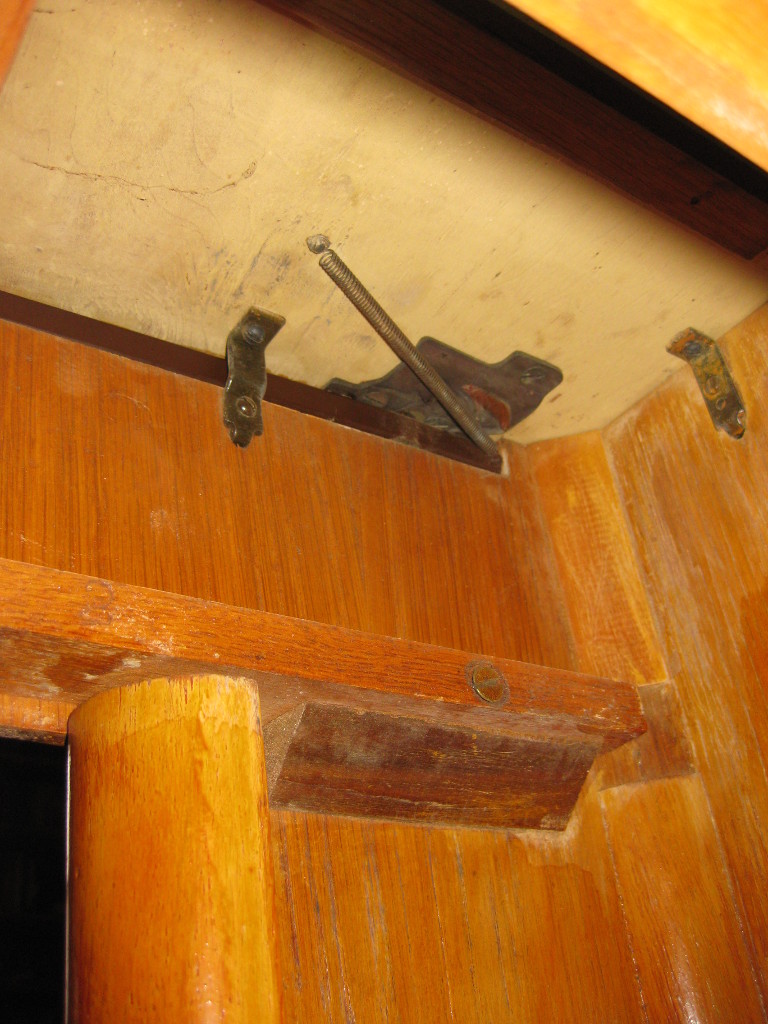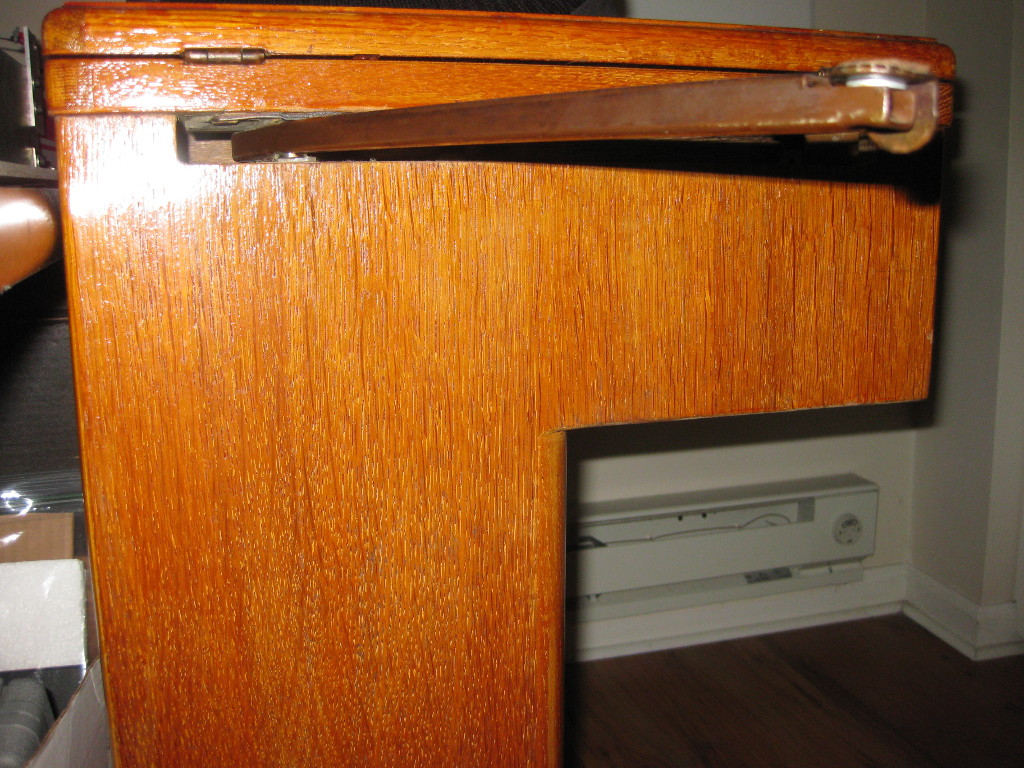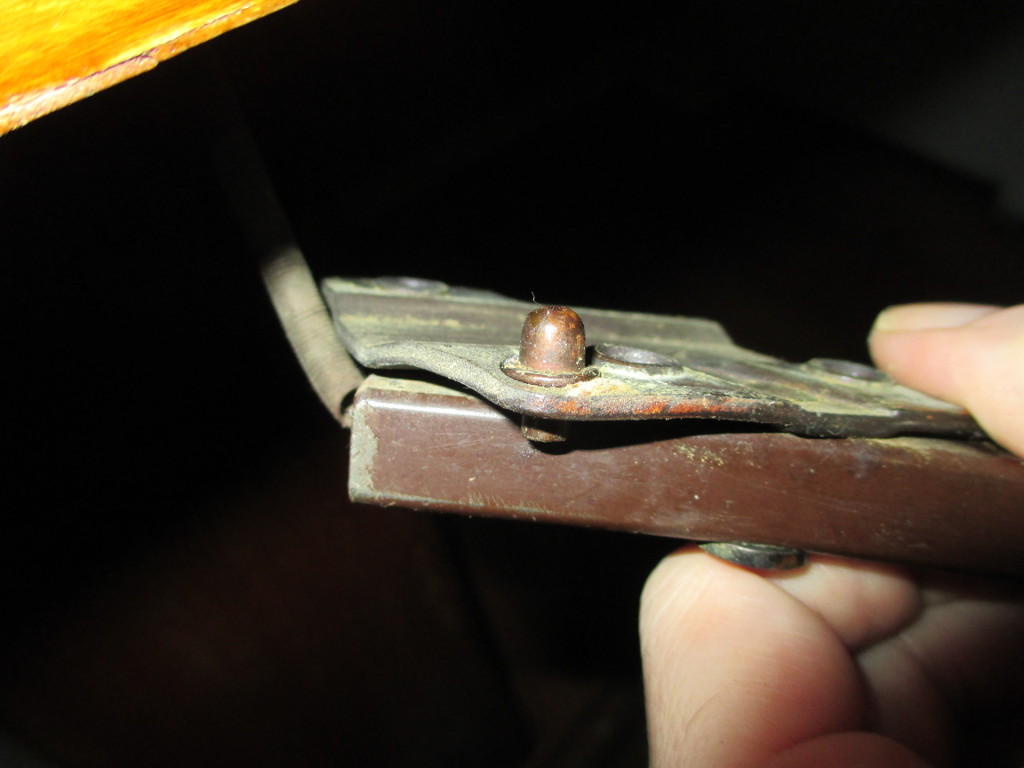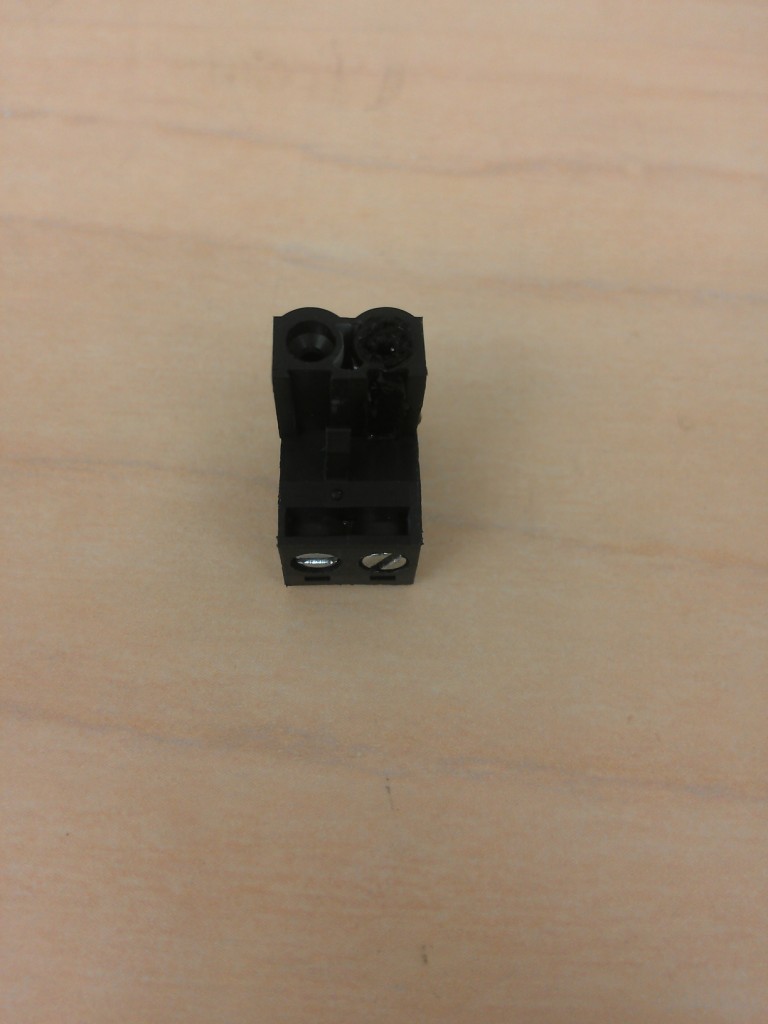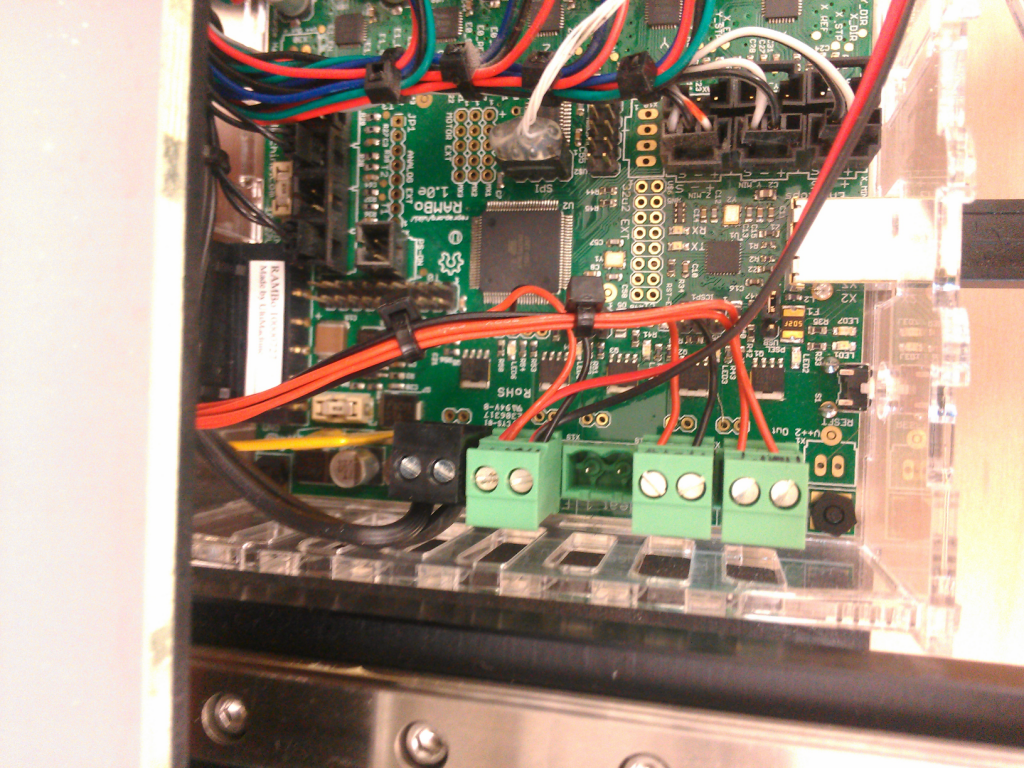One of my previous posts about my Singer attracted an email conversation with another owner about the swing-arm mechanism on the no. 42 cabinet. Unfortunately, the end-of-semester insanity struck before the matter was settled, and I am still unsatisfied with what I’ve been able to figure out.
Now that I’ve had a bit of time, I pulled apart my mechanism and took photos, shared below. I’m reasonably certain that if the mechanism is complete and correct, the arm will automatically deploy when the leaf is lifted. Unfortunately, I’m also quite sure that the pieces I do have are inadequate to support that functionality, and I can only guess what the other bits might be.
- Spring mechanism which deploys the swing arm.
- Currently, mine is retained by the back of the foot the leaf rests on hooking the wall of the cabinet. Releases when lifted.
- Swing arm’s position when deployed. The spring and stop on the bracket keep it at that angle.
- Swing-arm bracket, as attached to the bottom of the table. Note the return spring and the hole for a retention pin.
- Down-facing side of the sing-arm bracket. Simanco part number appears to be 186294.
- Swing-arm bracket, removed, side usually screwed against the underside of the top.
- The small end of the pin exactly fits the swing arm retention holes.
- The parts inside my hinge mechanism. The hole is drilled through, the large end of the pin perfectly fits the fourth hole in the hinge, and the small end of the pin fits through the bottom hole, but does not reach far enough to retain the arm.
- The inside of the leaf has a cavity for another part, which I do not have.
The larger diameter end of the part I do have matches the diameter of the holes in the hinge, and the smaller-diameter end matches the hole through the swing arm and base.
My best guess is that there are several objects similar to the pictured pin, one of which protrudes below the table into the catch hole of the swing arm through the holes in the hinge mechanism, springloaded “up” such that it retracts when the leaf is out, and is depressed by something protruding from the hinge-hole in the leaf pinning the arm when closed. The pictures sent by the other owner show what looks like the end of a similar pin protruding into the bracket, but it does not extend any where near far enough to retain the arm.
Posted partly in the hopes that my pictures will help other folks with their cabinets, but also if anyone with a no. 42, especially if it has a working swing-arm mechanism or parts that are not pictured, sees this I’d love some more information about how they’re supposed to go together.

